Cards In This Set
| Front | Back |
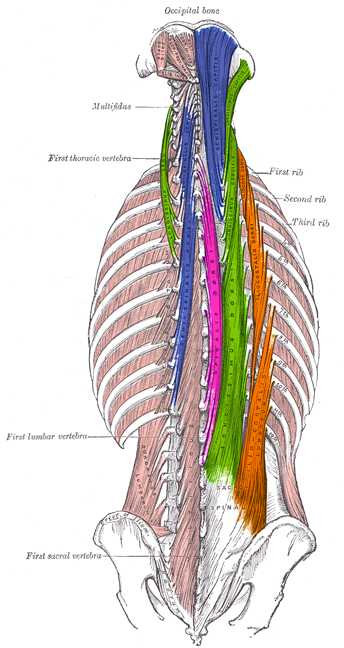 Erector Spinae Group (Iliocostalis, Longissimus, Spinalis) |
A: Unilaterally: laterally flex vertebral column to same side, Bilaterally: extends the vertebral column
O: Common tendon (thoracolumbar aponeurosis) that attaches to the posterior surface of the sacrum, iliac crest, spinous processes of T10-L5 I: Various attachments of posterior ribs, spinous & transverse processes of thoracic & cervical vertebrae, mastoid process of temporal bone From lateral to medial, the erector spinae muscles can be remembered using the mnemonic, "I Long for Spinach" for Illiocostalis, Longissimus and Spinalis |
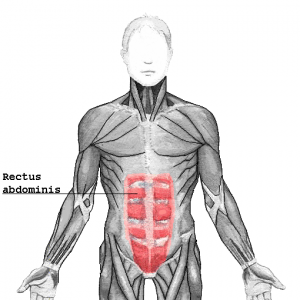 Rectus Abdominus |
A: Flex the vertebral column, Tilt the pelvis posteriorly (forward)
O: Pubic Crest, Pubic Symphysis I: Cartilage of 5th, 6th & 7th ribs, xyphoid process |
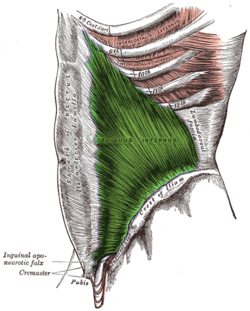 Internal Oblique |
A: Unilaterally: laterally flex vertebral column to same side, rotate the vertebral column to the same side Bilaterally: flex the vertebral column, compress abdominal contents
O: lateral inguinal ligament, iliac crest & thoracolumbar fascia I: internal surface of lower 3 ribs, abdominal aponeurosis to linea alba |
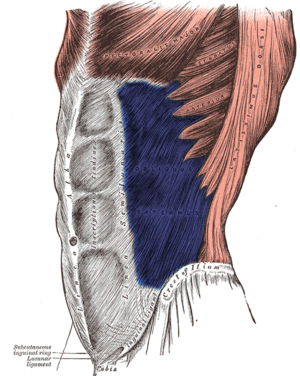 External Oblique |
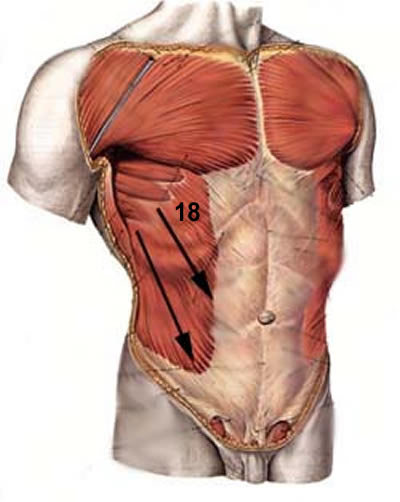 A: Unilaterally: laterally flex vertebral column to same side, rotate the vertebral column to the opposite side Bilaterally: flex the vertebral column, compress abdominal contents O: external surfaces of 5th to 12th ribs I: anterior part of the iliac crest, abdominal aponeurosis to linea alba |
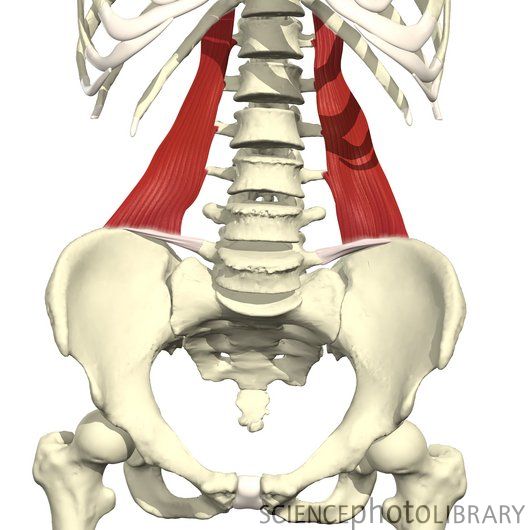 Quadratus Lumborum |
A: Unilaterally: laterally tilt (elevate) the pelvis, laterally flex vertebral column to same side Bilaterally: assist to extend the vertebral column, fix the last rib during forced inhalation & exhalation
O: posterior iliac crest I: last rib and transverse processes of L1-L4 |
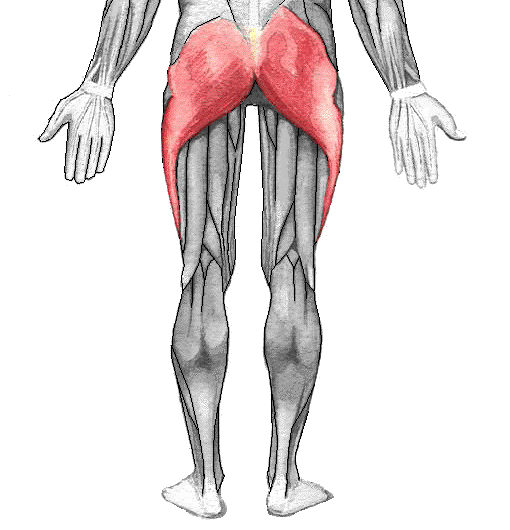 Gluteus Maximus |
 A: All Fibers: extend the hip, laterally rotate the hip, abduct the hip Lower Fibers: adduct the hip O: coccyx, edge of sacrum,posterior iliac crest, sacrotuberous and sacroiliac ligaments I: iliotibial tract (upper fibers), gluteal tuberosity (lower fibers) |
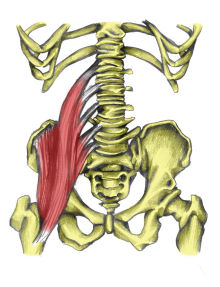 Iliopsoas (Iliacus and Psoas Major) |
A: With Origin Fixed: flex the hip, may laterally rotate the hip With Insertion Fixed: flex the trunk toward the thigh, tilt the pelvis anteriorly (back) Unilaterally: assist to laterally flex the lumbar spine
O: Psoas Major: bodies and transverse processes of lumbar vertebrae (L1-L5) Iliacus: iliac fossa I: lesser trochanter |
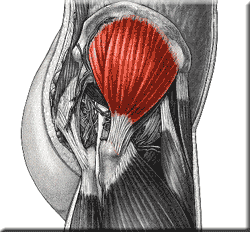 Gluteus Medius |
A: All Fibers: abduct the hip Anterior Fibers: flex and medially rotate the hip Posterior Fibers: extend and laterally rotate the hip
O: Outer surface of ilium between posterior and middle gluteal lines, just below the iliac crest I: Lateral surface of greater trochanter Gluteus Medius is an antagonist to itself; the anterior and posterior fibers do the opposite actions. |
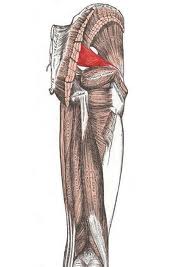 Piriformis |
A: Laterally rotate the hip, abduct the hip when hip is flexed
O: Anterior surface of the sacrum I: Superior aspect of the greater trochanter |
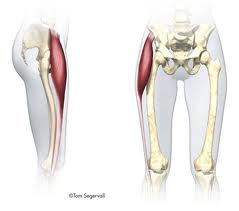 Tensor Fasciae Latae |
A: Flex the hip, Medially rotate the hip, abduct the hip
O: Iliac crest, posterior to the ASIS I: Iliotibial Tract |
 Tibialis Posterior |
A: Invert the foot, plantar flex the ankle
O: Proximal posterior shafts of tibia and fibula, interosseous membrane I: All five tarsal bones and bases of 2nd through 4th metatarsals |
|
Peronius Longus
|
A: Evert the foot, assist to plantar flex the ankle
O: Head and proximal 2/3 of fibula I: Bases of 1st metatarsal and medial cuneiform |
|
Extensor Digitorum Longus
|
A: Extend the 2nd through 5th toes, dorsiflex the ankle, evert the foot
O: Lateral condyle of the Tibia, proximal anterior shaft of the fibula, interosseous membrane I: Middle and distal phalanges of 2nd through 5th toes |
|
Extensor Digitorum
|
A: Extend the 2nd through 5th fingers, assist to extend the wrist
O: Common extensor tendon from lateral epicondyle of the humerus I: Middle and distal phalanges of 2nd through 5th fingers |
|
Flexor Carpi Radialis
|
A: Flex and abduct the wrist, may assist to flex the elbow
O: Common flexor tendon from medial epicondyle of the humerus I: Base of 2nd and 3rd metacarpals |



